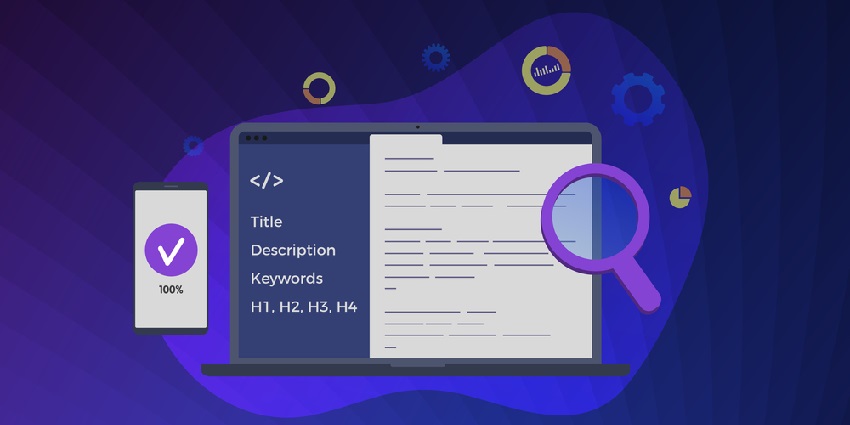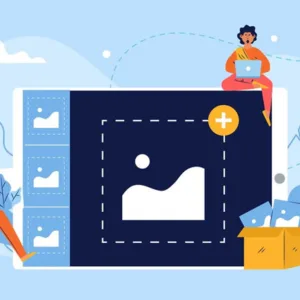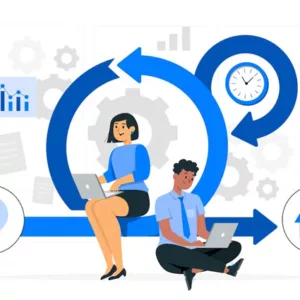On-page SEO, sometimes also known as on-site SEO, is the practice of optimizing your web page content for ranking high on social media pages, and make it easier for users to find your brand. There are tons of on-page SEO practices, but the most common ones include optimizing tags, content, internal links, and URLs. Off-page SEO and on-page SEO are completely different from each other.
Off-page SEO includes activities that are done outside the website. These activities are mostly to gain backlinks and improve traffic on your website.
Importance of SEO for Your Website
While most marketers will have you believe that traditional SEO practices aren’t relevant today, the truth is that they make a lot of difference. Google, the biggest search engine today still gives value to traditional SEO practices.
All the high competition keyword search results will show that the top results are using the exact keywords in their title. You need to keep in mind that SEO is much more than just stuffing keywords in your content.
To rank high on search engine pages, your content should take care of a few things:
- User experience
- Bounce rate and sessions
- Search relevant content
- Page loading speed
- Click-through rate
Optimize Content For SEO
Now that you understand why on-page SEO is important for your business, the next step is to optimize your content. The old saying “Content is King” stands true even today. Here are some tips to optimize your content for SEO:
1. Use Target Keyword in the First 100 Words
This is probably the oldest SEO trick in the book. Your primary keyword or main keyword should appear at least once in the first 100-150 words of your content. The reason for this is simple, Google gives more priority to keywords that show up early on your page. So, firstly do the proper keyword research to find the best keywords.
And when you think about this practice, it makes sense. If you’re writing content about email marketing, the word email marketing should be on top. This helps Google understand the intent of your content.
2. Use H1 Title for Blog Post Title
According to Google’s own guidelines, using an H1 tag helps Google understand the basic structure of the page. Most CMS platforms like WordPress already add the H1 tag to your blog title.
But, it’s always good to double-check. You want to check your site’s code to make sure that your blog title has the H1 tag. It’s also a good practice to add your target keyword in the H1 tag.
3. Keyword Density
Keyword density is how many times you’ve used the keyword in your content. While Google says that using the same keyword multiple times won’t help, the truth is that it does. If your page is about email marketing tips, then it makes sense for that keyword to appear multiple times.
But if the keyword appears just once in the whole article, Google can’t be sure that your content really is about email marketing tips. If the same keyword appears 5-10 times, it will show Google what the content is about.
But, keep in mind to not overstuff your content with keywords. You should try to add the keyword into the content naturally, and not stuff it wherever possible.
4. External Links are Your Friend
When you use relevant external links in your content, it helps Google understand your content topic better. External links to informative blogs suggest that your page has quality information to share.
5. Optimize URLs for SEO
Your URL structure is a vital part of your on-page SEO strategy. With some recent changes in how Google shows URLs on desktop and mobile. It’s more important today than tomorrow to optimize URLs.
Here are things to keep in mind for building SEO-friendly URLs:
- Keep your URLs short and to the point
- Include a keyword in URLs
While there’s nothing wrong with your URL just being your keyword. If you want, you can add 1-2 extra words to the URL.
Optimize Meta Title and Description
Another common on-page SEO practice is to optimize your meta title and descriptions. Google may not take your description into consideration to understand the content on the page, but the searchers do. The ideal description allows users to understand if they should click on the content or not. Here are the tips to optimize meta title and description tags:
1. Move the Keyword to the Beginning
Your title tag is one of the most important SEO factors for your website. Almost all search engines give title tags a lot of weight. So, the closer your keyword is to the beginning of the tag, the better results you can expect.
Obviously, you won’t always be able to add your keyword to the beginning of the title, but you should try to keep it as close to the front as possible.
2. Leverage Tag Modifiers
General tag modifiers like:
- Best
- Guide
- Checklist
- Fast
- Review
and more can help you rank higher on long-tail keywords. You can strategically place more modifiers to make your title tag more exciting. If you can manage to add modifiers in the right places, you can achieve high rankings quickly.
3. Keyword-Rich Meta Descriptions
According to Google’s SEO guide “Adding description meta tags to each of your pages is always a good practice”. So, make a habit of always hand-writing your meta descriptions. You know your content best so it makes sense that you write the meta descriptions.
Do make sure that you include your keyword at least once in your description. This is a good practice as Google makes the keyword bold in the meta description when users search for them.
Write SEO Friendly Content
It all comes down to this. Writing content that deserves that #1 spot in search engine results. Your content is more than the keywords that you use. Your content should be the perfect combination of:
- Freshness
- Informative and valuable
- Ideally optimized
Here’s how to write SEO-friendly content that makes a difference.
1. Unique Content
Unique content is so much more than plagiarism-free content. While it’s almost impossible to create completely new content on any given topic. But you should always aim to provide some new information to the readers.
Your unique content can include:
- Some unheard tips or strategy
- Personal experience tips
- Step-by-Step guides on any topic
- New case studies or new data
If you want to rank your content on top, then you need to provide a fresh perspective. While the tips and tricks you mention may be available in other blogs as well, you need to find something unique to offer.
2. Valuable Content
Writing unique content is just one-third of the complete picture. Your content should stand out from the crowd. It needs to offer a value that other content pieces don’t. There are some basic things you can try to add value to your content:
- Be Detail Oriented: Guides, strategies, and similar content perform best when they’re detailed. Add screenshots, steps, and images, that make the process easier for readers.
- Catchy Writing: Write content that speaks to your audience.
- Latest Information: Offer all the latest strategies, steps, and examples to help out the readers.
3. Search Relevant Content
If a user searches for an SEO checklist, and they end up finding a PPC checklist, they’d be disappointed. The point here is that your content should satisfy the search intent. Your content should include what the reader has searched for. If you can’t do that, you won’t be able to get top rankings on the first page.
Optimize for CTR
Your organic click-through rate should be more important to you than anything else. Firstly, CTR is a Google ranking factor. Secondly, increasing your CTR can help in getting more traffic to your website.
1. Use Question Title Tags
According to some data and research, question-based title tags get more clicks than normal titles. The reason for this is simple. Anyone who searches for a particular thing probably wants to know what it means. If they can find the answer to their questions in the first blog itself, it’ll be great for them.
Your title tag should provide the answers to questions readers are asking.
2. Always Add Meta Descriptions
We discussed meta descriptions and their importance above. They also play another role in your website’s on-page SEO. You don’t have to write a super catchy and compelling meta description all the time. Sometimes, just writing a meta description is enough.
Pages with meta descriptions get 6% more clicks compared to pages with no meta descriptions. You can use any variety of tools to find out the pages on your website that don’t have meta descriptions.
3. Create Emotionally Captivating Title Tags
According to a recent study, emotional titles get 8% more clicks than generic titles. But this strategy can easily backfire. The same study found that overboard emotional tags decreased the clicks by up to 15%.
While writing an emotional title tag can help you, if you go overboard, it starts feeling like a clickbait to the readers.
4. Add the Current Year
There is no specific data on whether adding year and dates in the title and description will improve your CTR. It’s known to work for several brands. This strategy works especially well for information that gets outdated pretty quickly. Technology-related blogs can benefit a lot by adding months, or years in their meta tags and titles.
Plus, it shows the reader that the content is fresh and up-to-date.
On-Page UX Optimization
Optimizing On-page UX is a crucial on-page optimization strategy. It helps your website to interact with Google in a better way. Google takes sessions, bounce rate, and other user interaction factors into account while offering ranking to your pages.
So, it makes sense for you to adopt the best possible practices to make sure that your content ranks as high as possible.
1. Keep Introductions Clear
Most readers will leave your website within the first 10 seconds if they don’t like how you’ve presented the information. The introduction to the content should be on top, and not hidden under any images.
You can add an image at the top of your content, but if it hides your introduction, then it will hurt you in the long run.
2. Break Down Your Content
The bitter truth is that whoever visits your website won’t read every single line. Users want their answers fast, this is why you should use a lot of subheadings. Using subheadings, the reader can quickly skip to the part that’s relevant to them.
Apart from subheadings, you should try to use tables, bullets, and lists to divide information perfectly.
3. An Active Community Helps
If you can manage to build an active community on your blog, it’ll be a direct contributor to your content’s success. A high-quality and highly active comment section offers readers something to read after they’re done reading your content.
The comments can be users sharing their own personal information, or they may be sharing how your content helped them. If you want, you can interact with the commentators to build an even more active community.
High-Grade On-Page SEO Tips
Now that we’ve covered all the basic on-page SEO tips and tricks, we should move on to the advanced on-page SEO tips. Here are some things you can do to take your SEO to the next level:
1. Always Use Original Images
Sometimes using stock images can impact your SEO negatively. When you use duplicate images from stock image sites, it impacts the credibility of your content. As a general rule of thumb, never ever use copied images.
2. Internal Linking
Those who skip out on internal linking are making a mistake. You should use all the high-ranking pages on your site to your advantage. While linking authority content to your new post, make sure to use keyword-friendly anchor texts.
3. Write Thorough Content
Google prioritizes content that gives users all the information they want on a single page. Writing detailed blogs and articles will work in your favor. If you’re writing on a topic that has a lot of information, try your best to cover all the information in a single post.
Make a habit of using LSI keywords in your content. As you’ll be writing long content, you should start incorporating LSI keywords. LSI keywords are synonyms of your primary keyword that determine the relevancy of your content.
4. Improve Page Loading Speed
Google has claimed that website loading speed is a major ranking factor. You can improve your website loading speed significantly just by switching to a better website hosting provider. Other things that you can do to improve your website’s loading speed include:
- Get rid of as many third party scripts as you can
- Reduce your page’s total size
- Don’t use resource-consuming images and videos
5. Optimize Images
All the images you use in your content must have a filename and an alt text. This helps Google understand how relevant the image is to the text. You should make at least 1 image optimized around your target keyword. In any one image, use your primary keyword for the filename.
You should also optimize your images for SEO. It helps search engines understand what your page is about.





